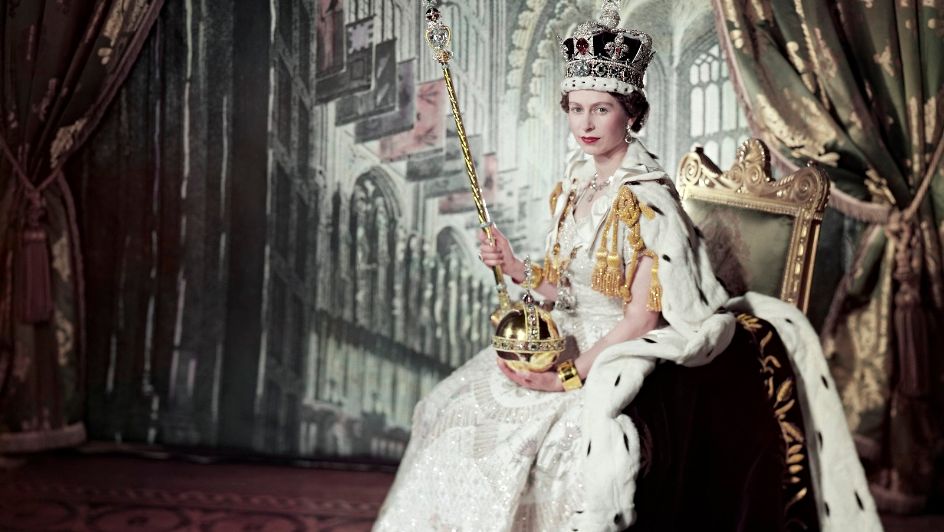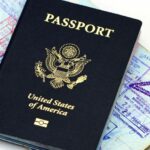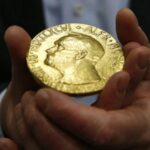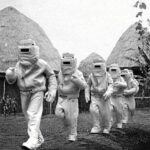#ThrowbackThursday – 6 February

It’s 6 February, and that means it’s time for another edition of Throwback Thursday! Today, we’re taking a look back at three prominent events that went down on this day in history:
1952 – The Ascendance of Queen Elizabeth II
On this day 73 years ago, one of the longest-reigning monarchs in British history inherited her father’s throne.
While touring Kenya with her husband, Prince Philip, on 6 February 1952, Princess Elizabeth – then 25-years-old – received news that her father, King George VI, had passed away after a battle with lung cancer. As his heir presumptive, she had appeared in his stead at public and formal events when his health began to decline the year before; however, it was clear she would have to take his place as Britain’s monarch.
It would take 16 months of planning before Princess Elizabeth, now 27-years-old, took up her late father’s mantle – she set out from Buckingham Palace to Westminster Abbey on a very rainy day on 2 June 1953, although she looked no less resplendent in the Gold State Coach, wearing a white satin gown and a diadem atop her dark hair.
Thousands upon thousands of her soon-to-be subjects lined the procession route to catch a glimpse of the princess through the downpour; 27 million Brits gathered around their black-and-white television sets to watch the proceedings from the comfort of their homes.
At the abbey, Princess Elizabeth took her oath of coronation before an 8 000-strong congregation, which included her mother Elizabeth, the Queen Mother, and her son, Prince Charles. After receiving her royal regalia, including the solid gold St Edward’s Crown, she was crowned Queen Elizabeth II.
Later that evening, the newly-crowned monarch addressed her subjects via a televised address:
“I have behind me not only the splendid traditions and the annals of more than a thousand years but the living strength and majesty of the Commonwealth and Empire; of societies old and new; of lands and races different in history and origins but all, by God’s Will, united in spirit and in aim.
“Therefore I am sure that this, my Coronation, is not the symbol of a power and a splendour that is gone but a declaration of our hopes for the future, and for the years I may, by God’s Grace and Mercy, be given to reign and serve you as your Queen.”
1961 – “This Is Your Life” … NOT!
On this day, footballer Danny Blanchflower made television history by becoming the first celebrity to refuse to appear on the iconic show, “This Is Your Life.”
A popular staple of live British television from the ‘50s up until the early 2000s, “This Is Your Life” saw guests – usually celebs – being surprised with a presentation of their past life, usually with the help of their families and friends (as well as a “Big Red Book”, which contained information about the guests’ lives).
At the time, Blanchflower was a celebrated player, leading Tottenham Hotspur to the League and FA Cup double in 1961. However, he was not prepared for the surprise held in store for him on 6 February 1961.
Host Eamonn Andrews recounted the incident in his autobiography, describing his failed attempt to lure Blanchflower to the studio under the guise of a regular football discussion that day. Then, when Andrews announced, “This is your life”, Blanchflower swiftly ran for the door, declaring, “Oh no, it’s not.”
“I bent down to pick up the [Big Red Book],” recalled Andrews. “As I turned, there was no Danny. He had headed for the door.”
“This programme is an invasion of privacy,” Blanchflower later explained, asserting his right to decline the presentation.
Years later, Blanchflower reaffirmed his decision, saying: “I never cared for the programme … I wasn’t interested in seeing my life reconstructed in these circumstances.”
Only a handful of individuals have ever turned down the show, making Blanchflower’s defiance a notable moment in entertainment history.
1971 – A Hole in One Crater
On 6 February 1971, American astronaut Alan Shepard made history by becoming the first person to hit golf balls on the Moon during NASA’s Apollo 14 mission.
A golf enthusiast, Shepard smuggled a collapsible golf club and two balls aboard the lunar module. In a playful moment broadcast to millions, while on the Moon, he struck the first ball, which landed in a crater, and he claimed the second “flew for miles and miles.”
Astrophysicist Ethan Siegel later noted that a perfect shot could indeed travel about 2.5 miles (a little over four kilometres) on the lunar surface.
Image Credit: Source


























Go Social
SocialNew Social Releases – Check them out NOW! N$3/day subscription
TikTok Content
SocialNew content for your TikTok - Watch NOW!
Weird ’n Wacky
FunHilarious video clips featuring animals, sports, food, & more!
Status Hub
SocialTrend on WhatsApp with these statuses!
Social Trending
SocialWant Top Trending Stickers and WhatsApp Stories!?